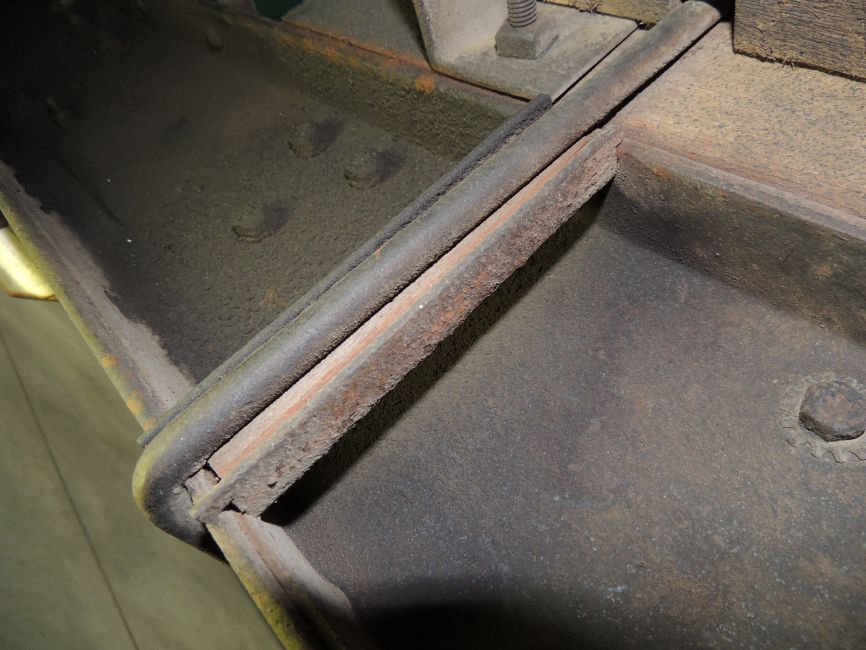
Posted by Clint Dixon [172.68.59.183] on Tuesday, August 13, 2019 at 20:58:51 :

Attached is an image of the channel braces backing up the U-bolts under my flatbed. I believe you should be able to see the remaining “nubs” mentioned in my previous post that keep the channels from walking deeper into the frame rail. I had forgotten that there is a thin piece of wood between the channel and U-bolt leg. This allows the load bearing end of the channel to ride slightly deeper into the frame rail, keeps the channel tight to the U-bolt leg and keeps it from migrating around too much, and probably helps to quiet squeaks and rattles one might get with steel-on-steel. Note that the U-bolts were installed with the legs and nuts point up. The way this flatbed was built, there was obviously no other way to mount them without building the bed around the bolts and lowering the whole assembly down onto the truck. This method was a very good idea as the gullet of the U-bolt cradles the bottom leg of the frame rail and is much kinder to it than the relatively sharp edges of the flat strap would have been.
The ends of the threaded legs of the U-bolts have been peened over so the nuts cannot be removed without a lot of effort – kind of a 1951 version of “Loctite.” The U-bolt nuts are not overly tight either – just snug. In fact, the way the whole bed was designed (bolted together with peaned threads on the bolts) allows it to flex without tearing itself apart. This fits in well with the intended design of the Power-Wagon frame that allows for controlled frame flex in off-road situations. The wooden rails under the flatbed are coped to exactly fit the rise of the trucks frame rails over the rear axle. They were also ripped to match the width of the frame rails. The somewhat loose connection between the bed and frame, allows the two to shift slightly relative to each other when needed, not unlike mating leaves of a leaf spring. The channel braces are really not maintaining the factory spread between the truck frames upper and lower legs in response to tightened U-bolts as much as they are maintaining the shape during off-road maneuvers when the flatbed is pulling up as the frame rail is pulling down.
A little background: I got to know the original owner. He was meticulous, methodical, and very detail oriented. He thought everything out first and worked slowly. Even at a slow pace, he could easily out work and out preform young guys a fraction of his age. I never saw, or even heard of him, having to do a task over. It was always done right the first time. Over the years I have spent countless hours lying under the truck studying the attention to detail that is evident in the construction of this flatbed. All of the steel brackets and stake pockets used in its construction were hand forged. So, when it came time to build a headache rack and side boards, I was ready to do my best to honor his craftsmanship by building them like I imagined he would have. He owned and operated a saw mill where he and his wife harvested trees and sawed the wood into boards that supplied a mill that turned them into flooring. So naturally, the wood chosen for the flatbed was not of saleable quality. I felt that my choice of using Hackberry fit right into the natural history of the truck.
I could remove the flatbed from this truck and no one would ever know it was there. The riveted brackets on the sides of the frame rails that the front channel of the pickup box would have mounted to, if it had been ordered with a pickup box, remain. The neighboring wood of the storage boxes was coped to fit around these brackets by the original owner.
Junior
Follow Ups: